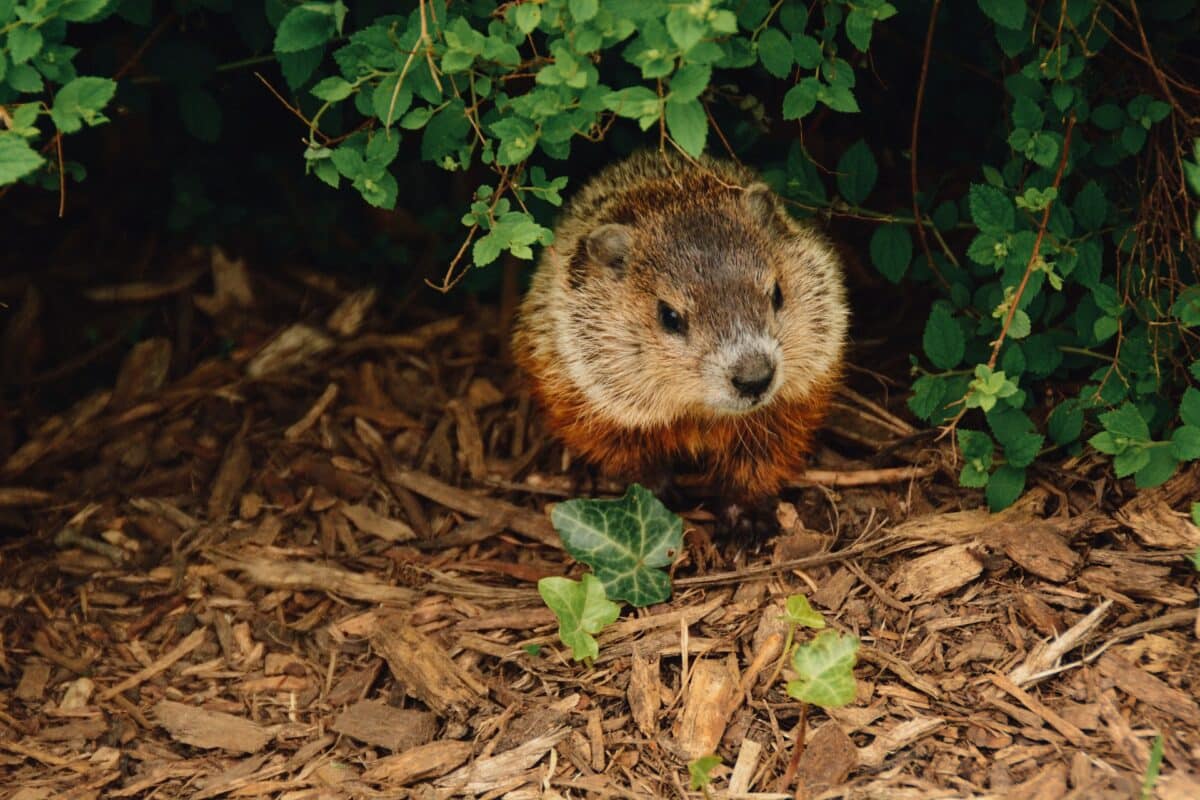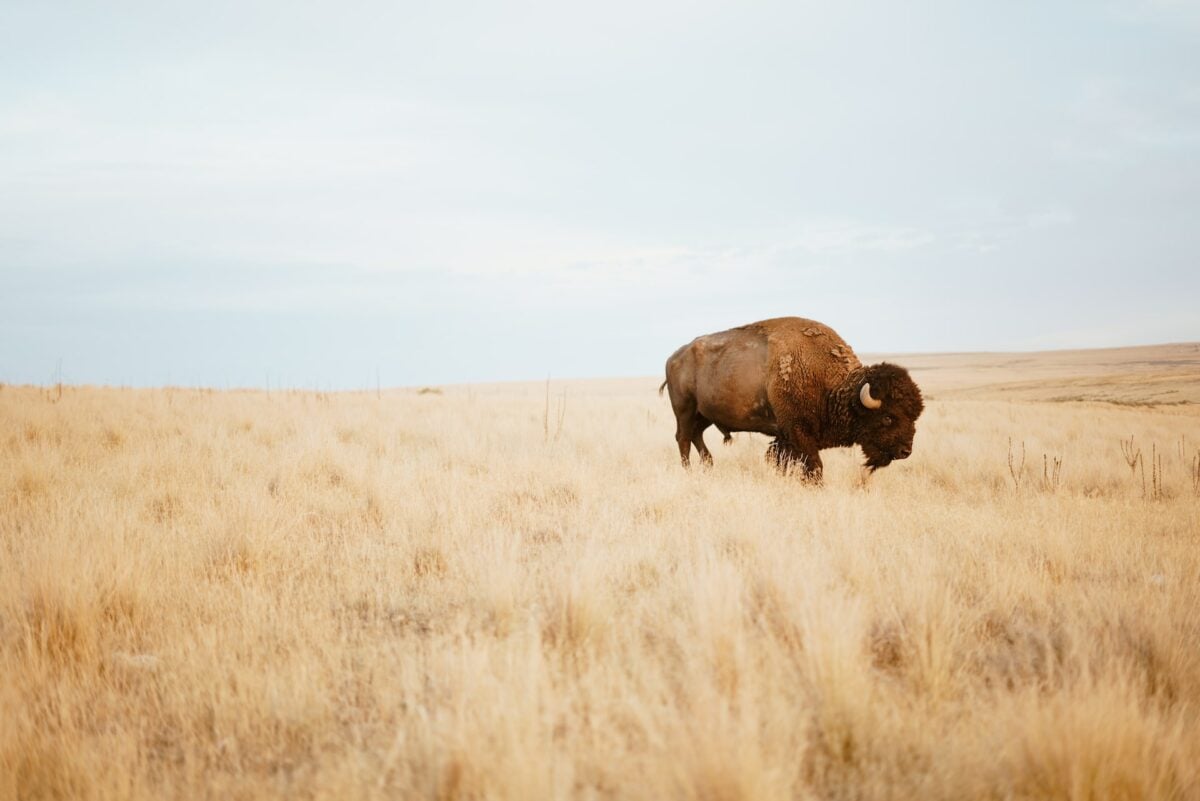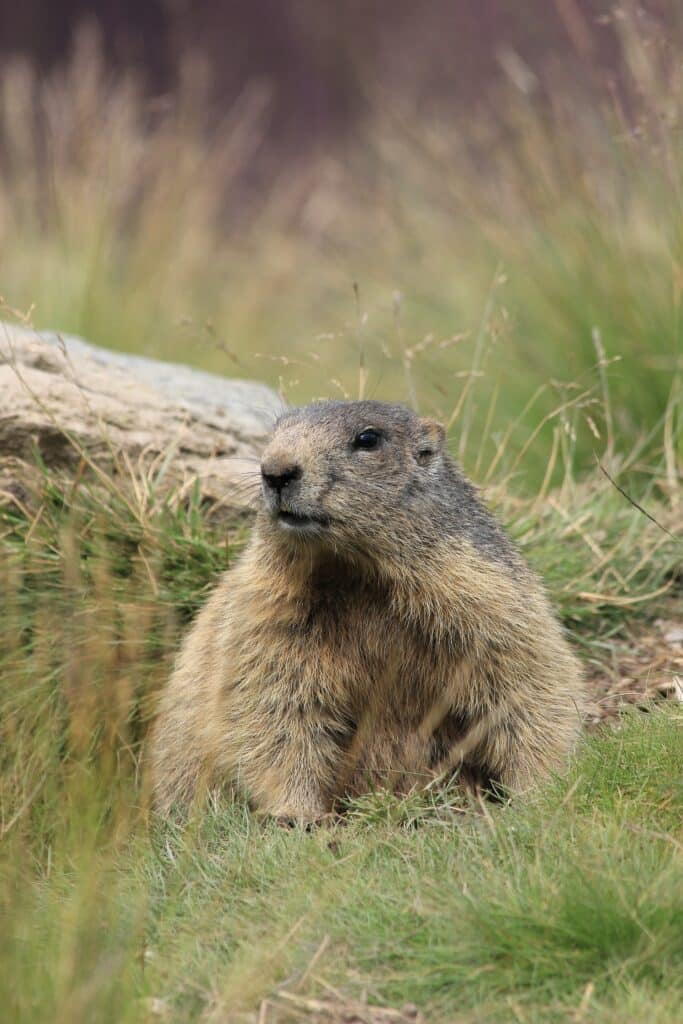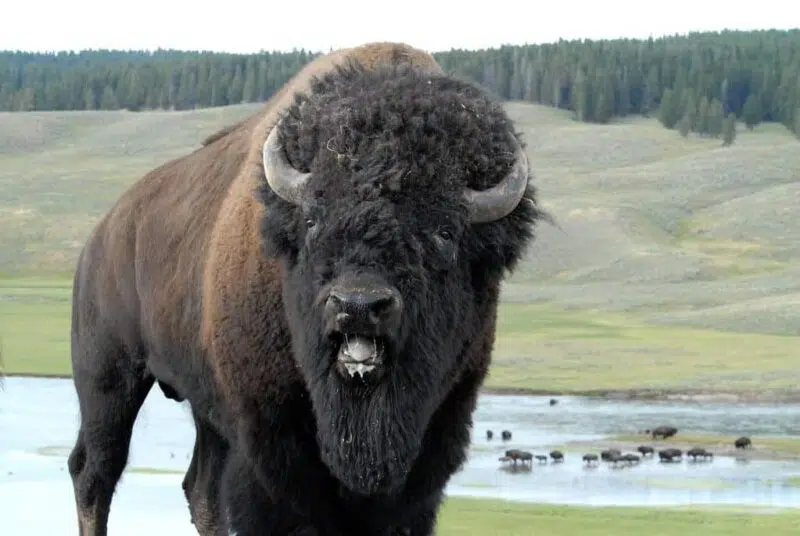Welcome to Animals and Wildlife in Kansas!
Kansas is a beautiful state in the United States and a prominent place for wildlife. Its largest city is Wichita, and its capital is Topeka.
It includes plain areas but has some rocky cliffs and rolling hills. Kansas is also known as the “Sunflower State” it witnesses four seasons each year, which include hot, humid summers and cold winters.
Animals and Wildlife in the State of Kansas

Kansas has almost all the animals of the U.S., which are common to every state. It has many known birds, including great horned owls, bald eagles, great blue herons, red-tailed hawks, and bluebirds.
It also has famous predators in the U.S.: foxes, coyotes, and bobcats.
Some of its main mammals include Raccoons, Opossums, Prairie dogs, cottontail rabbits, and muskrats.
Some native rodents of Kansas are groundhogs, pocket gophers, and mice. Unlike other states in the U.S., Kansas has only one type of squirrel species: the eastern fox squirrel.
Beavers were being hunted for an extended period before they reached the point of extinction, but now they have a healthy population in Kansas. You can see them in abundance there.
The Official Animal of the State of Kansas

Bison were once extinct in Kansas but have been back in huge numbers. They are big and have now been named the state’s official Animal.
Where Can You Find the Top Wild Animals in Kansas?
Despite being farmland and devoted to agricultural cultivation, Kansas has 28 state parks and many other wildlife conservation areas. The wild places and the conservation projects have helped Kansas to conserve its unique ecosystems.
Some of the areas are mentioned below where one can easily find wildlife there, which are as follow:
- The Tallgrass Prairie National Preserve
- Quivira National Wildlife Refuge
- Cimarron National Grassland
Some ranchers and farmers have started refuges for lesser prairie chickens under the Conservation Reserve Program. They have the rarest birds in the world, allowing people to visit the world’s rarest birds.
Dangerous Animals in Kansas

There are many giant animals in Kansas and many fierce predators. Still, these animals are not dangerous to humans as there is no report of any attack of these animals on humans.
The Animals humans should be concerned with are snakes, spiders, and insects, as they harm humans.
Spiders are dangerous to humans as their bites can cause severe allergies and bruises to human skin. Kansas has different types of spiders: black widow, hobo, and brown recluse.
The other most dangerous Animal in Kansas is the snake, which has two snake species in Kansas Copperheads and prairie rattlesnakes.
Ticks are a parasite that carries disease which is dangerous to humans. It can be easily found in wild animals and other domestic places.
Endangered Animals and Wildlife in Kansas

The lesser prairie chicken is a native wild bird of Kansas and is also on the endangered species list. This bird was once abundant, but its numbers are reduced by more than 90 percent due to the conversions of farmlands.
State’s Conservation Reserve Program has been playing its role in saving endangered species by converting many areas of cropland into grasses for lesser prairie chickens to survive. Through the efforts of the State’s Conservation Reserve Program, the population has increased, but they are still endangered.
There are some other endangered animals in Kansas which are mentioned below:
- Eastern spotted skunk
- Gray bat
- Pallid sturgeon
- Least tern
- Mucket mussel
- Cave salamander
- Strecker’s chorus frog
- Whooping crane
There are different varieties of animals in Kansas State. If you visit the state, you will see tiny rodents, medium-sized mammals, and giant bison. Some other animals that can be found in Kansas state are:
Armyworm
If you have been wondering who has been destroying your crops all along, let us introduce you to one of those species known as Armyworm. They are found in many countries, including the United States, especially in areas with more agricultural lands and crop fields.
The origin of armyworms is North America, South America, and Central America. They travel through the world from place to place with the help of humans, such as ships. They live in the east of the Rocky Mountains.
Life stages of Armyworm
Armyworm has different life stages, including eggs, larvae, pupae, and adults. The transformation of an Armyworm from an egg to an adult is typical for 30 to 50 days. With each stage, the size of their head increases, and the color of their head also changes. After becoming an adult, they become ready to damage your crops because they feed mainly on grasses and crops.
They usually attack in groups and move from one crop field to another after finishing eating one. They keep hiding all day beneath layers of crop debris, and they can damage the entire crop in one attack. Usually, they attack at night or on a cloudy day to feed. One of their favorite crops to strike is a cornfield, so people with cornfield fields should be more conscious about their next arrival at their place.
Humans, predators, and parasitoids are the biggest threat to their existence as people use agricultural pest control to eliminate pests from their crops. They detect the presence of their predators with the sound they make, and their hearing ability is way too good.
Armyworms reside in the east of the Rocky Mountains and northward into Canada. They can also move to Colorado by flying up to 62 miles per night. Weather affects their growth and population, and their numbers start decreasing in winter. The process of growth stages also slows down from egg to adult.
The great Armyworm regions are Southern Europe, Asia, Africa, South America, and Central America. After colonizing the New World, they made their way to each continent.
In the larval stage of armyworms, they feed on weedy grass, barley, oats, rice, wheat, sugarcane, timothy, corn, and millet. They also feed on weeds and giant grasses. They will provide any fodder if there is any shortage. They will even go to home lawns and give the lawn grass and other fields, such as golf courses.
Burrowing Owls
Kansas has a variety of animals, and it would be unfair not to mention the burrowing owls of Kansas. Burrowing owls are slender, yellow-eyed, have no ear tufts visible, have white eyebrows, and are long-legged. Male and female burrowing owls are exactly like each other, as it is difficult to tell them apart.
When we think of a bird, we associate them with flying, but burrowing owls spend most of their time near the ground despite being amazingly capable of fanciful flight. There are other subspecies of burrowing owls, each of which plays a vital role in its habitat by regulating the number of prey in their natural habitats.
Unlike others, burrowing owls are among the few that migrate to other places in winter. The northernmost population of burrowing animals migrates in the winter. In summer, they breed in the United States and Mexico; in winter, they multiply in Central America and South America. The burrowing owls already in Central America and South America do not migrate when winter arrives.
They can be found throughout the Western Hemisphere. Grasslands, prairies, agricultural fields, and a little vegetation or trees are interesting to reside in. They do not see a place alone when they have to make a nest. They look for the abandoned burrows of badgers, desert tortoises, coyotes, prairie dogs, and foxes. But not all the burrowing owls are lazy, and some have been seen digging their burrows. While making their nest, they use dung, which is vital in attracting insects and dinner for the burrowing owls. They also mark their territory by extending the home range around the nesting area.
Burrowing owls seem very active in the daytime but usually hunt at sunrise or sunset. The rest of the time, they engage in other activities like bathing in puddles or dust, stretching or peering. Thirteen sounds have been documented of burrowing animals, in which most of the sounds are adapted for defending territory, and some of them are used while they communicate with their mate.
The burrowing owls feed on insects and arthropods as they are a carnivore. They feed on grasshoppers, crickets, beetles, lizards, snakes, earthworms, amphibians, ground squirrels, and small birds like sparrows.
Marmot

No, here we are not talking about any giant animal the way it seems from the name. Here we are talking about a sweet squirrel who belong to a group of ground squirrel known as marmots. Its scientific name is Marmota Monax. They can be found throughout the United States and Canada and survive in different environments.
Groundhogs are woodchucks, thick wood badgers, moonrock, land beavers, and whistle pigs. Their name suggests they are ground squirrels but very good at climbing trees when required. An interesting fact about groundhogs is that they are known as whistle pigs because of their whistling quality. When they sense any danger from outside or another animal, they whistle to other groundhogs as a warning or help. They are very good at swimming and can survive if any threat forces them to jump in the water.
You can easily recognize groundhogs as they stand out because of their bushy tails and large claws. They weigh 13 to 17 pounds, almost the size of a small dog or any big domestic cat. They have different incisors color as most of the marmots have yellow teeth, and they have white teeth. They have a pair of incisors on top of the mouth and at the bottom. They can stand two feet tall, and their tail can reach ten inches.
Groundhogs are known to be brilliant animals as they communicate with each other through whistling, can swim, climb, and can reach a top speed of almost ten mph despite their bulky size. They have different skills which help them survive their predators.
They hibernate in winter, and their body temperature, breaths, heartbeat, and respiration decrease during hibernation. They hibernate every winter season and usually come out at the start of February, but if the weather is still too cold to survive, they hibernate until it gets pleasant.
Summary of Animals and Wildlife in Kansas
Kansas is well known for agriculture, as 90 percent of its lands are dedicated to farming. The major crops of Kansas are cotton, corn, soya beans, and wheat. The places not under agricultural cultivation have mixed short and tall prairies.
Suppose you enjoyed reading about the Animals in Kansas. Also, please review our guide about Animals in Texas or Wildlife in California.
- 4 Best Places to Swim, Snorkel, or Dive with Orcas - April 16, 2024
- Tiger Safari: The Complete Guide - April 16, 2024
- Top 10 Cutest Fish in the World - April 15, 2024



